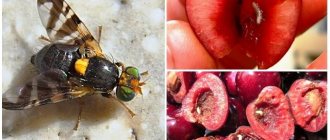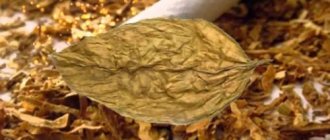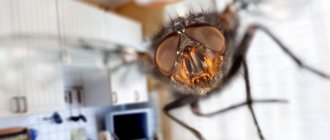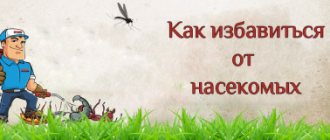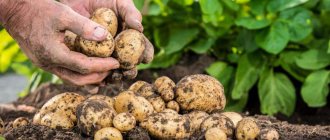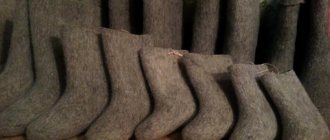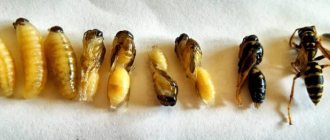Urea as a fertilizer for the garden
Like any other nitrogen-containing fertilizer, urea is necessary for all plants. But most often it is used to treat trees and shrubs. Nitrogen directly affects the growth rate of fruits - berries and fruits. If this element is missing, then less green mass will be processed than necessary. The plant also does not develop in height, the fruits become smaller, the color of the leaves is less pronounced.
Plants can obtain nitrogen from the air and soil. But often its concentration in such cases is too low, and additional application to the soil and treatment of the garden with urea is recommended. When the compound gets into the soil, through chemical reactions it turns into ammonium carbonate in a few days. There is an important element in this reaction - the vital activity of soil bacteria, which make such a process possible.
The new compound will be easily taken up from the soil by plants, and no side effects will appear. At the same time, treating trees and shrubs with urea will prevent the development of infectious diseases and attacks by insect pests.
Urea protection?
Experts recommend using urea when first tending to fruit plantings in spring. In order to achieve the best results, it is necessary to properly prepare the solution in accordance with the instructions. The first spraying requires the use of a substance that has a high concentration. This product not only protects plants, but also extends the growing season. With the help of this drug, fruit plantings are protected from the negative effects of low temperatures. With the help of this drug, the possibility of the appearance of diseases such as rot, septosporosis, black cancer, moss and various insects, including their eggs and larvae, is eliminated.
Urea for the destruction of diseases and pests
Experienced gardeners know how many problems pests can cause, how the activity of such insects affects the condition of the garden, and how difficult it is to save the crop.
The use of urea helps stop the spread of pests throughout the area and makes it easier to care for plants.
Aphids on an apple tree
Aphid
Urea is the granules from which the solution is prepared. To combat aphids, make a solution in the following proportion - 500-700 g of product per bucket of water. The consumption of the finished composition should be 2.5 liters per 10 sq.m. This treatment is carried out in the spring. The solution in the specified concentration can be used to treat plants not only against aphids, but also against weevils and apple blossom beetles.
In autumn, the procedure is performed slightly differently. Take 700 g of urea in granules per bucket of water, but additionally mix it with copper sulfate (50 g). The last substance is copper sulfate.
To combat aphids, it is important to spray not only the crown of the tree and its trunk, but also fallen leaves.
Colorado beetle
The pest's favorite crop is potatoes. There are different methods of combating the Colorado potato beetle, but the simplest option is treating the tops with a urea solution. To do this, the granules are mixed with water in equal proportions.
There is one more effective method. In early spring, bait is made from old tubers soaked in a urea solution. These potatoes are simply laid out in the area where they are going to plant the crop, and after some time they are collected along with the pests and destroyed.
Nematodes
Nematodes are worms that feed on plant roots, causing crop death. It is difficult to fight them - to do this you will first have to get rid of the infected plants. They should be dug up along with the soil and burned or a special hole should be made for them, which should be filled with urea (the dosage is 5 kg of granules per 1 cubic meter). Afterwards, the area is treated with urea in a proportion of 200 g per 1 sq.m.
If the site is not infested with pests, and measures are carried out for preventive purposes, urea is added to the soil in the fall when plowing the site (at the rate of 100 g per 1 sq.m.)
Lichen on an apple tree
Diseases
Urea does not help with all diseases. But it is effective if the plants have scab, purple spot and monilial burn.
Treatment is carried out with a concentrated solution - 500 g of urea per bucket of water.
Preventive autumn treatment of apple trees for scab
Every gardener knows the truth that it is much easier to prevent infection than to treat trees later. Scab is no exception, and with proper prevention, you can protect your garden from this scourge.
It is best to process the plantings in the fall, after the apples are harvested. Spraying is effective at the time of leaf fall, as well as after the leaves have completely fallen. Diseased and dried branches are cut off from apple trees, the bark is lightly peeled, covering the areas with garden varnish or a solution of lime and clay.
For treatments, combined solutions are used:
- Gamair and Fitosporin-M (diluted in water according to instructions);
- Gribofit and Imunozot.
These medications will prevent scab fungi from developing and spreading throughout the garden. Combining different products in tank mixtures allows you to reduce the total number of treatments while still getting a good result.
On a note!
In the spring, it is recommended to additionally spray the yayulon with various preparations to strengthen the immune system. Fitosporin-M, Energen or Gumistar are suitable.
Feeding with boron
The use of boron in small doses does not affect the growth of ovaries. But in our case, the drugs are used as a means of preventing scab.
For processing the following are used:
- boric acid;
- drug Borogum-M (organomineral supplement, diluted in water, used for spraying);
- boronmagnesium
Boric acid is diluted in hot water (take 0.1 grams of product per liter of water), boromagnesium - in the same proportion.
Traditional treatment with copper-containing solutions and approved chemistry
Good results are obtained from spraying an apple orchard with a traditional Bordeaux mixture, as well as copper-containing compounds. Typically, gardeners use such compositions for apple trees in the spring, but the preparations are also suitable for autumn treatment. Traditional working solution: 5%.
Application in autumn is indicated only if such treatments were carried out in spring and summer. Cuprozan and Zinneb are also effective. After the leaves fall, treatment of apple trees with the immunostimulant Zircon is also indicated.
Advantages and disadvantages
Urea has many advantages:
- Almost instantaneous onset of action, while the effect lasts for a long time.
- Versatility. The method works regardless of soil type or conditions (for example, the effectiveness will be the same for greenhouses and open ground).
- It is safe to use not only in spring or autumn, but also in summer. Although the proportions when preparing the solution must be observed, if they are accidentally violated, there will be no catastrophic consequences (for example, leaf burns). Violation of the recipe can only affect the effectiveness of spraying, but even then only slightly.
- A slight delay in the growing season when spraying trees and shrubs in spring. This slowdown even benefits the plants, since it protects the ovaries from sudden frosts. Therefore, fruit crops are sprayed first.
- Increased yields provided that the treatment is carried out during the period of bud formation, since urea protects fruit trees from pests.
Urea can also be applied to waterlogged soil. The urea solution has one more property - it allows you to quickly clear the area of old stumps, since it accelerates the process of their rotting.
Spraying with urea also has disadvantages, although they are few. They are mainly due to the fact that the fertilizer cannot be used simultaneously with nitrogen compounds, chalk and lime. But the most restrictions are associated with the incorporation of urea into the soil. Urea quickly disappears from the soil, and more worries arise related to organizing regular watering.
In addition, the addition of urea leads to an increase in acidity. Therefore, it is necessary from the very beginning to think through measures that will help compensate for this increase (much depends on what crops are planned to be planted on the site).
Carrying out the procedure
Since urea belongs to the category of hazardous chemical solutions, it is necessary to use a respirator when spraying fruit plants. If it is not available, you can use a gauze bandage, which has many layers. A person should also protect himself with gloves and glasses. Despite the fact that special protection is used for spraying, it is necessary to protect yourself from direct contact with urea.
Spraying the garden with urea
Spraying trees with urea should be done evenly. It is necessary to treat not only the trunk of shrubs and fruit plants, but also all small branches. If the tree is excessively large, then a stepladder is used to carry out the procedure efficiently. To ensure high-quality irrigation of plants, it is necessary to maintain a distance of 80 centimeters from the sprayer to the tree. After completion of work, it is recommended to thoroughly wash the sprayer. The person should rinse their mouth with a disinfectant. To wash your hands, it is best to use soap, which has an antibacterial effect.
When is the treatment carried out?
The timing of the procedure depends on the climatic conditions of the region. In spring, for example, you need to focus on the beginning of flowering of trees. In autumn, procedures are tied to the fall of leaves. Regardless of this, spraying is carried out 2 times a year.
Spring treatment
Early spring spraying of the garden can be done immediately after thawing. But often the procedure is carried out during flowering or immediately after it.
Much depends on the situation. So, the thicker the foliage on the trees, the sooner all procedures should be completed. For example, if there are young leaves on pears and plums, treatment can be carried out even in late spring or early summer.
Early spraying has its advantages, since it is an effective preventive measure against various pests and at the same time protects young shoots from freezing.
Autumn processing
When spraying fruit trees in autumn, it is important to ensure that the urea solution gets evenly over the entire surface of the crown and the area of soil in the tree trunk circle. This will help protect plants, increase their immunity so that they can survive the winter, and neutralize potential foci of infectious diseases.
The procedure is usually carried out after the leaves fall. If the plant has signs of disease, then additionally spray the trunks and fallen leaves, increasing the standard concentration of the solution. The optimal time for the procedure in most regions is mid-November, and in some the end of the month. Earlier treatment will only lead to leaf burns and frost resistance will decrease.
Timing of urea treatment in autumn
When to treat trees depends on the weather. In any case, the procedure is carried out after leaf fall, almost on bare branches.
Urea for autumn treatment is used at a temperature not lower than +5 degrees, otherwise the drug will not work. Therefore, solutions from it are used in Siberia, the Urals and in more northern regions from late September to mid-October, in the Moscow region - in October or early November, in the southern regions - in November.
You will be interested to know: How to get rid of midges in the ground in seedlings: the best ways
If autumn is warm, wait for a slight cooling. At positive temperatures above +10 degrees, nitrogen can provoke the growth of shoots and the appearance of buds, which will freeze during frosts.
It is important! In regions with warm winters, urea is not recommended for use in the fall. In the south, trees are sprayed with urea in the spring, and iron sulfate is used in the fall.
When urea treatment is carried out in the fall, you need to pay attention to the weather forecast. There should be no rain for 2-3 days. Otherwise, all your efforts will be in vain, and you will have to repeat the spraying.
How to prepare a urea solution for spraying trees?
A urea solution is prepared in an amount depending on the purpose of use. Most often, 500-700 g per 10 liters of water, if we are talking about trees. For vegetables the dose is less.
In this case, urea must be diluted immediately in a container of suitable volume so that it is convenient to mix in it. It is best to immediately take a bucket. But it is also important to ensure safety, since you are working with toxic chemicals.
This is what carbamide (urea) looks like
Spraying devices
Spraying of shrubs and fruit plantings can be done using manual or mechanical sprayers. With their help, the correct and most effective procedure is ensured. Thanks to the use of a sprayer, urea is sprayed as evenly as possible and settles on the branches, which ensures a high effect of the drug.
When using sprayers, a high level of safety for the gardener is ensured, since his contact with the product is minimal. Absolutely all devices are characterized by the presence of a special pump, which greatly simplifies the process of treating the garden with urea. Experts recommend using mechanical sprayers, which are as convenient to use as possible. Thanks to a wide range of devices, a gardener can choose the most suitable option depending on his needs.
In order to protect trees from various harmful influences, they must be treated with urea. The procedure must be carried out in the spring. To increase the level of protection of shrubs and fruit plantings, it can be carried out in the autumn.
Processing of fruit trees
Treatment of fruit trees is carried out only after removing dead branches and destroying pests that have settled in cracks in the bark. It is best to carry out the procedure early in the morning or evening to prevent sunburn.
Simultaneously with spraying, root feeding can be carried out. If a urea solution is used for this, then its concentration is 120-150 g per bucket of water for plums and cherries and almost twice as much for apple trees.
If organic fertilizers have already been added to the soil, fertilizing with urea can be carried out, but its amount should be reduced by 2-3 times.
Indications for use
Urea is recommended to be used as the main fertilizer on any type of soil and for a variety of fruit and berry plantings and vegetable or green crops in the garden. As a rule, urea is used in the following cases:
- nitrogen starvation, which is manifested by a lag in growth and development, yellowing of leaves, weak flowering, absence of ovaries;
- insufficient formation of fruits, as well as deformed appearance of fruits or their shedding.

